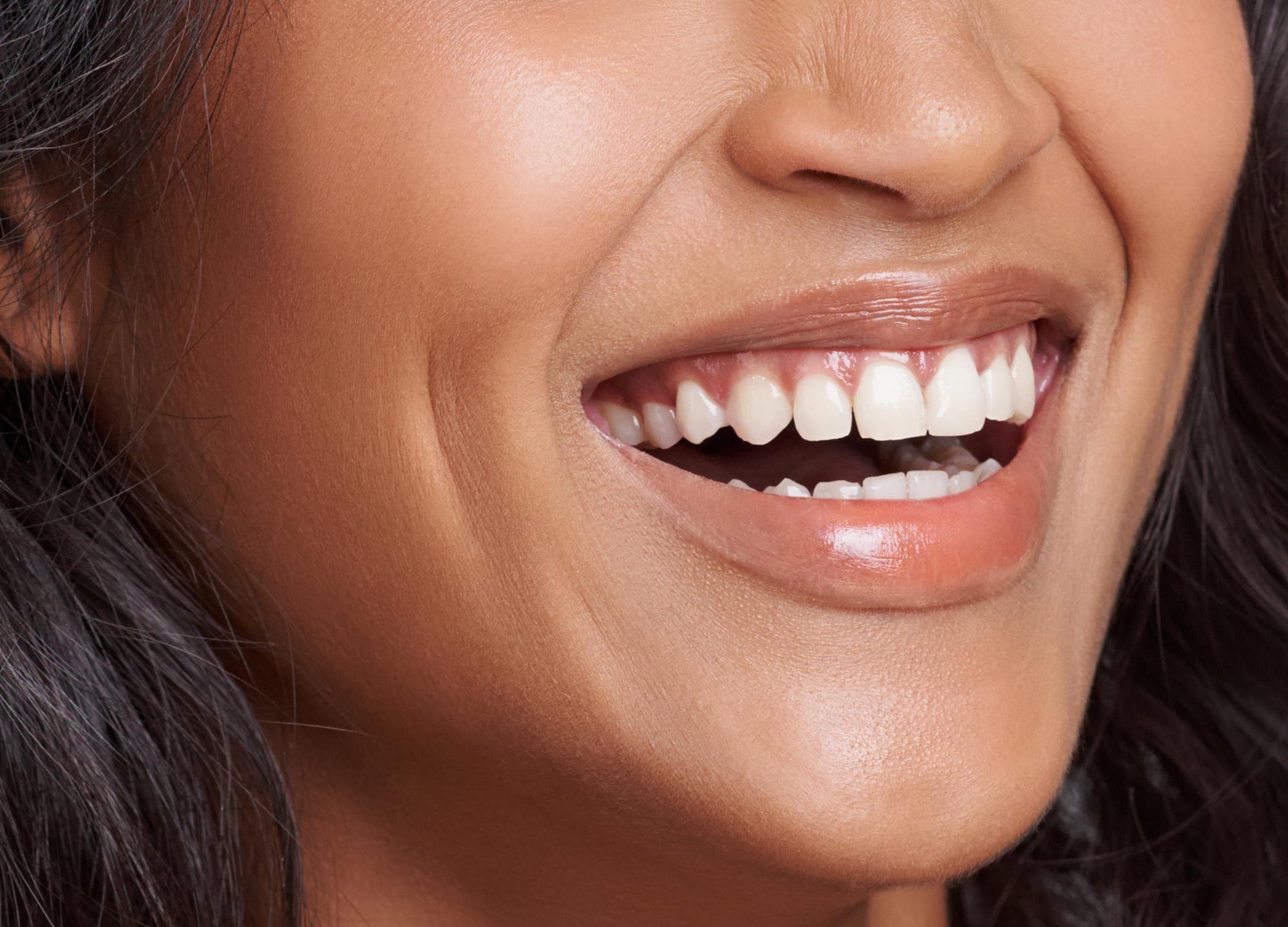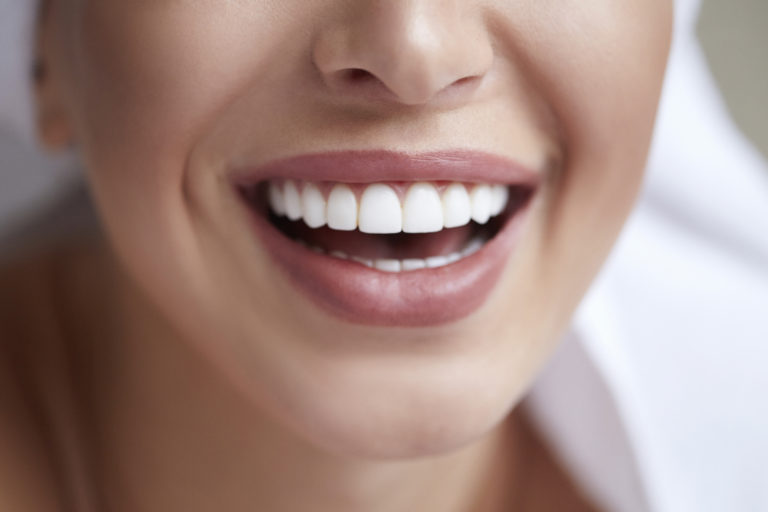Invisalign, an alternative to traditional metal braces, is a treatment that uses clear aligners to straighten teeth, bridge gaps, and correct crowding and mild bite issues. It’s particularly popular among adults whose teeth may have shifted in the decades since they got their braces removed or who never got braces to begin with. If you’re considering a smile makeover with Invisalign, read on for 13 things dentists and RealSelf community members who have gotten the treatment say they’d wish they’d known.
1. Research providers to find the right one for you.
Both dentists and orthodontists can provide Invisalign. Orthodontists have an extra two to three years of training in correcting bites and straightening teeth, and they can explain all options for correcting your teeth, including techniques other than Invisalign. However, if your teeth do not need other corrective techniques, a dentist experienced with Invisalign might be a good choice.
“Invisalign also lists certified providers on its site,” says Dr. Victoria Veytsman, a cosmetic dentist in New York City. “But ultimately, you should choose a provider you feel most comfortable with.”
2. Your teeth may need a pretreatment shave.
If your teeth are crowded, your dentist or orthodontist may recommend shaving them, also known as filing, slenderizing, or interproximal reduction (IPR). Although this sounds drastic, in most cases it means taking off only a tenth of a millimeter.
If there’s not enough room for your teeth, there are really only three options: expand the arches to make room, remove teeth to make room, or shave teeth to make room—and in most cases, the third is a suitable course of action.
3. You may experience some pain with Invisalign.
It’s normal if your aligners are painful the first few days—after all, they’re there to move the position of your teeth. Luckily, there are some quick things you can do to alleviate discomfort, such as having your dentist file down sharper edges and using wax to cover areas that feel rough.
“If you get the wax on the problem area as soon as possible, you’ll save yourself a lot of pain. For those who cannot get the wax to stick, I recommend putting a bead of wax on your tray on the spot where it hurts before you put the tray into your mouth,” says RealSelf member properlyprim.
4. You might sound a little different at first.
Invisalign can affect speech, causing a slight lisp. Some people find it very noticeable, while for others, it’s barely there. Dr. Veytsman says she doesn’t often notice speech issues in her practice but that there can be a small adjustment period—and the more you speak with your trays in, the faster you’ll adjust. If your lisp doesn’t go away within the first few weeks, however, let your dentist know, as it may be an indication that your aligners aren’t fitting quite right.
5. You can still kiss with Invisalign.
You may be worried about the effect clear aligners will have on your love life—and the truth is, answers vary. Some RealSelf members say you can kiss romance goodbye, while others say Invisalign doesn’t change a thing. Often, it’s a bigger issue to the person wearing aligners than it is to the partner.
“My boyfriend used to get so frustrated when I would refuse to even peck him goodbye when I was going off to work, because I was convinced he could taste/feel my Invisalign but he didn’t even care,” says RealSelf member ladyofthenight.
The bottom line, according to Dr. Veytsman: “Yes, you can kiss! But I would rinse after, as bacteria is transferable and can get trapped under aligners.”
6. Invisalign could change your diet.
Be prepared for the immediate effect Invisalign will have on your eating and drinking habits. Your dentist will likely warn you to drink only water when your aligners are in. And it’s a good idea to drink a lot of it, since having the aligners in can make your mouth dry and irritated.
Many RealSelf community members report that they miss drinking coffee or beer slowly. With Invisalign, they have to instead remove their aligners, eat or drink quickly, then brush their teeth before putting them back in. “The real shocker was the lifestyle change,” says RealSelf member michaelfromny. “It will change your lifestyle overnight.”
However, the changes aren’t all bad. Some community members report losing a few extra pounds as a result of being on the “Invisalign diet.”
7. Invisalign can come with accessories.
Some people who get Invisalign have attachments, or “buttons,” temporarily bonded to their teeth as part of the treatment. Your dentist or orthodontist will determine if you need them. Made of tooth-colored filling material, attachments help the aligner trays grip individual teeth, which helps move them to their correct position. They are removed when your Invisalign treatment is completed.
Although attachments are sometimes referred to as “buttons,” orthodontists use that term to mean something else: small round pieces of metal or plastic that are used to attach elastics, also known as rubber bands, to correct other problems with tooth alignment.
8. Caring for your teeth is going to take longer.
It’s very important to brush and floss after each time you eat and before you reinsert your aligners. It’s tempting to skip a step, but with Invisalign on, your teeth are soaking in whatever is on them. “Hygiene becomes even more important because you are wearing trays all day, and keeping things clean and bacteria levels low is key to combat potential inflammation,” Dr. Veytsman says.
As for cleaning your aligners, dentists typically recommend brushing them with toothpaste. Invisalign sells cleaning tablets, but a mild denture cleaner, a diluted bleach rinse, or retainer-cleaning tablets will work.
9. You can whiten your teeth while using Invisalign.
People are often interested in whitening and straightening. Should you wait until after Invisalign treatment is completed, or can you do both? Fortunately, most dentists say whitening during Invisalign is absolutely okay, so you can get the straight, white teeth you’ve always wanted, all in one go.
10. Most people see results within a year—but it might be quicker.
The average Invisalign course for adults is about a year, but “you can start to see minor results in about two to three months,” Dr. Veytsman notes. To accelerate the Invisalign process, your dentist can treat you with AcceleDent or Propel. Acceledent is an FDA-cleared device that you use at home for about 20 minutes each day. It uses micropulse technology to accelerate the movement of your teeth.
“Under normal Invisalign recommendations, you change trays every two weeks, but with the AcceleDent, I changed trays every week,” says RealSelf member casmira2, who was able to complete Invisalign treatment in about six months. “As an added bonus, the AcceleDent gently massages your teeth, which makes the initial pain/discomfort of wearing a new tray a lot more tolerable.”
Propel is a treatment done in a dentist’s office. It makes a series of small holes, called micro-osteoperforations, in the jaw. The treatment is performed every six to eight weeks. Dentists have found that Propel can reduce treatment time by about 60%. Discomfort from Propel is minimal and akin to the feeling of having a deep cleaning.
11. You’re not done after Invisalign.
After you complete your Invisalign treatment, you must wear a retainer every night to keep your teeth in place. Most dentists recommend wearing your retainer around the clock for the first few months and overnight thereafter.
12. Invisalign costs vary.
Dentists point to two main factors that affect the cost of Invisalign. One is the complexity of the treatment; additional treatment time and more aligner trays make it more expensive.
The second factor is location. “It can cost anywhere from $4,000 to $9,000, depending on where your dentist is located and the length of your case,” Dr. Veytsman says.
You should also consider the cost of aftercare in the form of retainers, bite guards, and bite adjustments. Ask your Invisalign provider if these are included in the initial price quote.
13. Invisalign isn’t right for everyone.
Invisalign can’t fix every problem. Discuss with your dentist or orthodontist what Invisalign can and cannot do for you, and consult more than one expert. You can and should ask to see a ClinCheck, which is a short animated movie that Invisalign produces of your teeth and how they will be moved by Invisalign.
Most problems can be fixed with Invisalign, but the major exceptions are poor compliance (not wearing the trays), rotating lower canine teeth, correcting jaw-size differences, and adjusting the vertical position of small teeth.
Invisalign, as is the case with braces of any kind, is a big commitment. Ideally, you should wear your aligners 22 hours a day, every day. That gives you two hours a day to remove them for eating, drinking, and cleaning.“You need to be compliant [with wearing the aligners] and then also wear retainers at night at the end of treatment,” Dr. Veytsman says. For Invisalign to work, it’s important for teeth to have constant, gradual pressure, so leaving trays out for more than two hours will cause teeth to tighten up and take more time to loosen again once the trays are back in.











